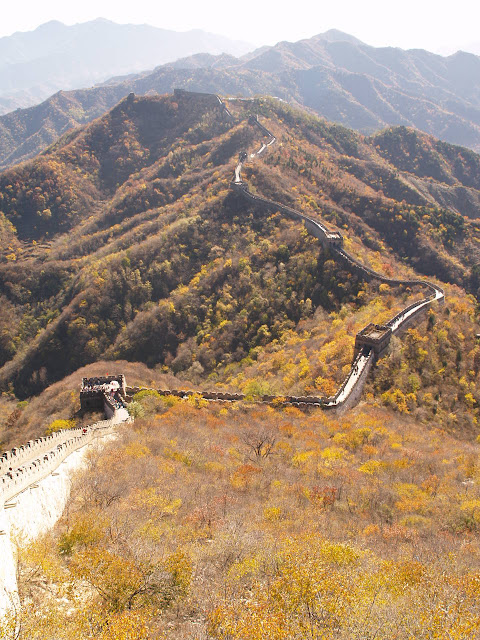On the one side of the square is the Great Hall of the
People. This is the site of the Chinese National People's Congress, this vast
building is only used 3 or 4 weeks throughout year. The Great Auditorium seats
10,000 people and the Banqueting Hall will seat up to 5,000 people at a
seating.
On the other side of the square is the China National
Museum. We stopped by one morning and went through the Revolutionary Museum
section which presents the development of modern day China and how the CPC (Communist
Peoples Party) rose to power. The English text had a huge spin on how the party
rescued China from the brink of destruction and raised the people to its
present day power and glory. If you get a chance please visit this section of the
museum it is truly a masterful piece of propaganda.
Tian'an Men is the name of the Ming dynasty gate at the north that
leads into the Forbidden City and is where Chairmen Mao proclaimed the founding
of the People's Republic of China on October 1, 1949. A portrait of Mao hangs
on the gate and is the focal point to the entire square. Tens of thousands of
visitors come to Tian'an Men Square everyday and get their picture taken in
front of the gate. Almost all are Chinese tour groups coming in from the
country for there once and a life time visit to Beijing and the famous square.
Because there was not a lot to photograph in the square I started taking
pictures of the people getting their pictures taken, below are a few to check
out.


















































